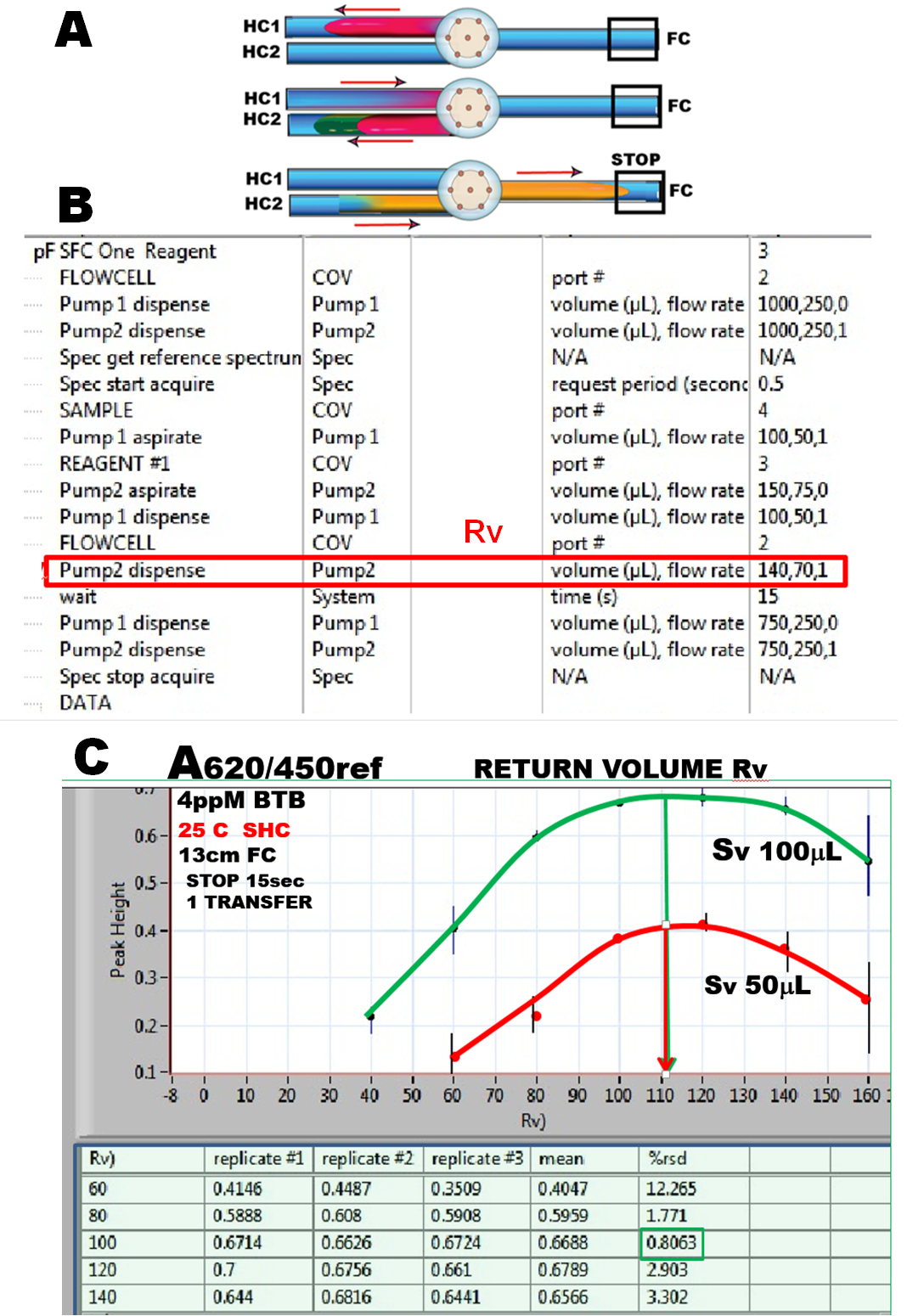pFI: Optimizing Single Reagent Assays.
Single Reagent One transfer
SFC protocols for single reagent, can be designed without a transfer (1.2.32.) or with a single transfer from HC1 to HC2 while reagent is being added at the confluence point (A).
Let us examine reproducibility of microfluidic operations of a more complex SFC protocol that (B) comprising the following steps:
1) sample aspiration into HC1,
2) sample transfer into HC2, while “reagent” is simultaneously added at the confluence point,
3) transfer of reaction product into the flow cell where the sample zone is trapped for reaction rate measurement.
In order to obtain maximum sensitivity and best reproducibility of an assay, the centroid of the reacting bolus (peak maximum) should be positioned in the middle of the light path of a flow cell. This position is identified by using the assay protocol (B) and by injecting a dye (BTB bromothymol blue in a well buffered solution), and DI water as a carrier, and in place of “reagent #1”.
By changing the return volume Rv, the thus obtained, superimposed stop flow responses (C) show that Rv 110 mcrL places the centroid of sample zone in the middle of the light path of the 13cm long flow cell. The result Table (C) indicates that the optimum Rv for single reagent assay is100mcrL at which point the reproducibility of SFC based measurement is rsd. of 0.8%.
1.2.30.










